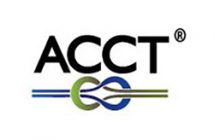As posted on ACCT’s website…
Two recent incidents have brought to our attention that employees working in zip line landing areas and on associated platforms may be exposed to previously underestimated fall potential. Fatalities and serious injuries have occurred.
This risk may be underestimated because the height of the edge of take-off or landing platforms may vary significantly along the perimeter of the platform, creating a sense of security in one section without recognition of exposure at other edges. Additionally, the ground adjacent to or near the platform may pose a fall or tumble hazard itself (for example, steep or loose slopes, cliffs, and ravines) or even be at grade level. Employees may also be exposed to the risk of accidental entanglement or purposeful clutch of a zip line rider, allowing the unrestrained employee to traverse the cable into a dangerous fall zone. Each of these risks may be eliminated by ensuring that an adequate restraint or fall protection system is available to employees in these aerial adventure environments and that employees correctly use the restraint or fall protection systems that have been provided.
Zip line landing areas and associated platforms vary in design. The following factors (and there may be others) deserve your careful consideration when evaluating whether an employee has been provided with adequate restraint or fall protection
- The height of the platform above the ground anywhere along its perimeter
- The ability of employees of all sizes to easily move to the best position to do all aspects of their job
- The training and life safety equipment provided to zip line take-off and landing area employees
- The availability of clearly marked restraint or fall protection anchors
- The possibility that an employee may traverse beyond collective fall protection (such as a net) accidentally coupled with a rider. Particular consideration should be given to the potential that the fall hazard area may be a considerable distance away.
- Adequate individual restraint or fall protection may include fall restraint (employee is prevented from reaching an edge), fall restrict (employee’s fall is limited by a personal safety system), and fall arrest (employee’s fall is mitigated through use of a fall arrest system).
We are suggesting the following when designing or using a zip line take-off or landing area and associated platforms
- If there is a risk of fall, consult the employee fall protection regulations in the jurisdiction. Fall protection systems for employees must be properly designed.
- Evaluate the terrain immediately adjacent to the zip line landing area platform especially the existence of a steep slope that may exacerbate the consequences of a slip off the platform. Fall hazards may exist near zip line take-off or landing areas or may be located upwards of 50 ft away
- Consider the size, speed, and strength of zip line riders approaching the zip line landing area
- Consider the effects of failures in the brake system and its parts, and what impact those failures may have on riders and employees – particularly the possibility that a rider may attempt to stop themselves by grabbing the employee
- In a fall hazard environment, investigate the suitability of collective fall protection measures such as railings, nets, and airbags. Topography and drag distances may preclude these from being suitable choices
We strongly urge all those with any relation to zip line landing area platforms to evaluate the fall hazards in these environments with a specific focus on employee/rider interaction and implement restraint or fall protection systems.
For questions regarding this Advisory Notice, please contact [email protected].





